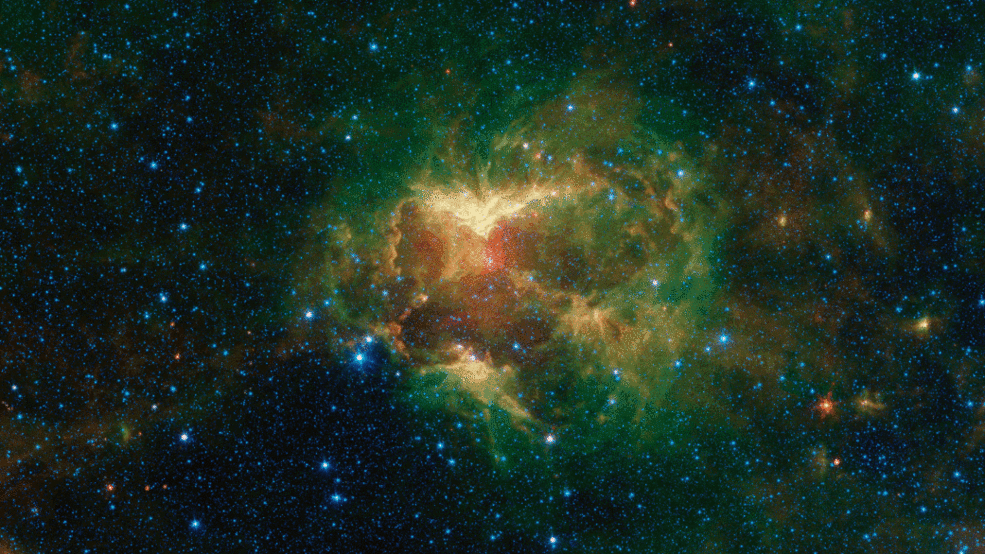The US space agency NASA says it has found a cloud of gas and dust that looks like a celestial jack-o'-lantern.
The image of the O-type star was taken by its Spitzer Space Telescope.
The massive star is about 15 to 20 times heavier than the Sun, and is likely responsible for sculpting this cosmic pumpkin.
A recent study of the region suggests that the powerful outflow of radiation and particles from the star likely swept the surrounding dust and gas outward, creating deep gouges in this cloud, which is known as a nebula.
Spitzer, which detects infrared light, saw the star glowing like a candle at the centre of a hollowed-out pumpkin.
The study's authors have fittingly nicknamed the structure the 'Jack-o'-lantern Nebula.'
 Image: NASA
Image: NASAA large amount of objects in the universe emit infrared light, often as heat - so they tend to radiate more infrared light the warmer they are.
Invisible to the human eye, three wavelengths of infrared light make up the multicolour image of the nebula.
Green and red represent light emitted, primarily by dust radiating at different temperatures - though some stars radiate prominently in these wavelengths as well.
The combination of green and red creates yellow hues.
And blue represents a wavelength mostly emitted by stars and some very hot regions of the nebula - while white regions indicate where the objects are bright in all three colours.
The O-type star appears as a white spot in the centre of a red dust shell near the centre of the scooped-out region.









